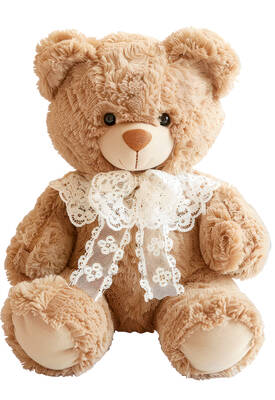對話 Dialogue
小實:馬克,你桌上那個是省水的「起泡器」嗎?
Xiǎoshí: Mǎkè, nǐ zhuō shàng nàge shì shěngshuǐ de “qǐpàoqì” ma?

馬克:嗯,這是我要回家裝在水龍頭上的。
Mǎkè: En, zhè shì wǒ yào huíjiā zhuāng zài shuǐlóngtóu shàng de.
小實:哇!我也想買這個,可是不知道有沒有效。
Xiǎoshí: Wa! Wǒ yě xiǎng mǎi zhège, kěshì bù zhīdào yǒu méiyǒuxiào.
馬克:我也是第一次買這個,希望可以省一點水。
Mǎkè: Wǒ yěshì dì yī cì mǎi zhège, xīwàng kěyǐ shěng yìdiǎn shuǐ.
小實:好,我也趕快去買一個來裝,一起珍惜水資源。
Xiǎoshí: Hǎo, wǒ yě gǎnkuài qù mǎi yíge lái zhuāng, yìqǐ zhēnxí shuǐzīyuán.
馬克:其實省水還有很多方法,像是多淋浴、不泡澡。
Mǎkè: Qíshí shěngshuǐ háiyǒu hěnduō fāngfǎ, xiàngshì duō línyù, búpàozǎo.
小實:我們家沒有浴缸,所以我只能淋浴。
Xiǎoshí: Wǒmen jiā méiyǒu yùgāng, suǒyǐ wǒ zhǐ néng línyù.
馬克:還有重複用水,像是我用除濕機的水來沖馬桶。
Mǎkè: Háiyǒu chóngfù yòngshuǐ, xiàngshì wǒ yòng chúshījī de shuǐlái chōng mǎtǒng.
小實:哇!你真的很珍惜水資源,我要向你看齊。
Xiǎoshí: Wa! Nǐ zhēnde hěn zhēnxí shuǐ zīyuán, wǒ yào xiàng nǐ kànqí.
翻譯 Translation
Xiaoshi: Mark, is that a water-saving “bubbler” on your desk?
Mark: Yes, I’m going to put it on the faucet once I get home.
Xiaoshi: Wow! I want to buy this too, but I don’t know if it will work.
Mark: I’m also using this for the first time, hoping to save water.
Xiaoshi: Well, I should buy one as soon as possible so we can cherish water resources together.
Mark: In fact, there are many ways to save water, such as taking showers more, instead of taking baths.
Xiaoshi: We don’t have a bathtub at home, so I can only take a shower.
Mark: Also, I use the water from the dehumidifier to flush the toilet.
Xiaoshi: Wow! You really do cherish water resources. I’m impressed.
單字片語 Vocabulary
1. 省(水)shěng (shuǐ) to save (water)
2. 起泡器 qǐpàoqì bubbler
3. 水龍頭 shuǐlóngtóu faucet
4. 珍惜 zhēnxí to cherish
5. 水資源 shuǐ zīyuán water resources
6. 淋浴 línyù take a shower
7. 泡澡 pàozǎo take a bath
8. 浴缸 yùgāng bathtub
9. 重複 chóngfù re-, repeatedly
10. 沖馬桶 chōng mǎtǒng to flush the toilet
教材音檔 Audio Files
教材影片 Video Files:
https://www.instagram.com/celc.nou_tw/guide/_/17999106352646292/
實踐大學華語中心提供
By Shih Chien University Chinese Language Center: https://chineseusc.com/

If you’ve recently spotted adults parading around with cuddly toys dangling from their designer handbags, your eyes haven’t been deceiving you. The playful trend of adorning bags with cute charms has become popular among people of various ages. Plushies like Labubu and anime and manga characters such as Chiikawa have become must-have accessories that make personal statements. The practice of attaching charms to personal items has been common across cultures throughout history. In ancient civilizations, charms were often used as symbols of protection, good luck, or identity. Fast-forward to more modern times, and style icons like Jane Birkin, a

★ Bilingual Story is a fictionalized account. 雙語故事部分內容純屬虛構。 Kevin leaned over the bubbling pot. “Hey. . . are you okay? You’ve barely touched your food.” Zoey blinked. Her face was red — not from blushing, but from the “mala” spice and the heat of the room. Her blond hair clumped to her face like strands of fine spaghetti. Her carefully applied makeup now streaked. “This isn’t what I expected,” she said softly, forcing a smile. All around them, Kevin’s friends were laughing, shouting, and tossing ingredients into the broth. The air smelled of chili oil and garlic.

Continued from yesterday(延續自昨日) https://www.taipeitimes.com/News/lang If plushie charms are cute little nods to people’s interests, ita bags are full-on declarations. The term “ita” comes from the Japanese word itai, which means “painful” and reflects the overwhelming visual intensity of these bags. An ita bag is essentially a handbag, backpack, or tote meticulously decorated with an extensive collection of merchandise dedicated to a specific character or idol. These bags usually feature a clear plastic window to display carefully arranged pins, badges, keychains, or fan art. Both the interior and exterior may be covered in fandom memorabilia, creating an aesthetic so intense that it’s almost “painful”

對話 Dialogue 清清:華華,你知道嗎?聽說11月5號有「超級月亮」!那天的月亮會特別大、特別亮。 Qīngqing: Huáhua, nǐ zhīdào ma? Tīngshuō shíyī yuè wǔ hào yǒu “chāojí yuèliàng”! Nà tiān de yuèliàng huì tèbié dà, tèbié liàng. 華華:真的嗎?太棒了!我想去河邊看月亮,順便拍照片。 Huáhua: Zhēnde ma? Tài bàng le! Wǒ xiǎng qù hébiān kàn yuèliàng, shùnbiàn pāi zhàopiàn. 清清:聽說在超級月亮出現的那天晚上許願,願望比較容易實現。 Qīngqing: Tīngshuō zài chāojí yuèliàng chūxiàn de nàtiān wǎnshàng xǔyuàn, yuànwàng bǐjiào róngyì shíxiàn. 華華:是嗎?讓我好好想想要許什麼願。 Huáhua: Shì ma? Ràng wǒ hǎohǎo xiǎngxiǎng yào xǔ shénme yuàn. 清清:哈哈,我已經想好了,我希望「每天都準時下班」。 Qīngqing: Hāhā, wǒ yǐjīng xiǎng hǎo le, wǒ xīwàng “měitiān dōu zhǔnshí xiàbān”. 華華:嗯......我希望今年「年終獎金加倍」 Huáhua: ēn... wǒ xīwàng jīnnián “niánzhōng jiǎngjīn jiābèi”! 清清:等你把手邊的專案做完,你的願望一定可以實現的。 Qīngqing: Děng nǐ bǎ shǒubiān de zhuān’àn zuò wán, nǐ de yuànwàng yídìng kěyǐ shíxiàn de. 華華:希望一切能順利! Huáhua: Xīwàng yíqiè néng shùnlì! 翻譯